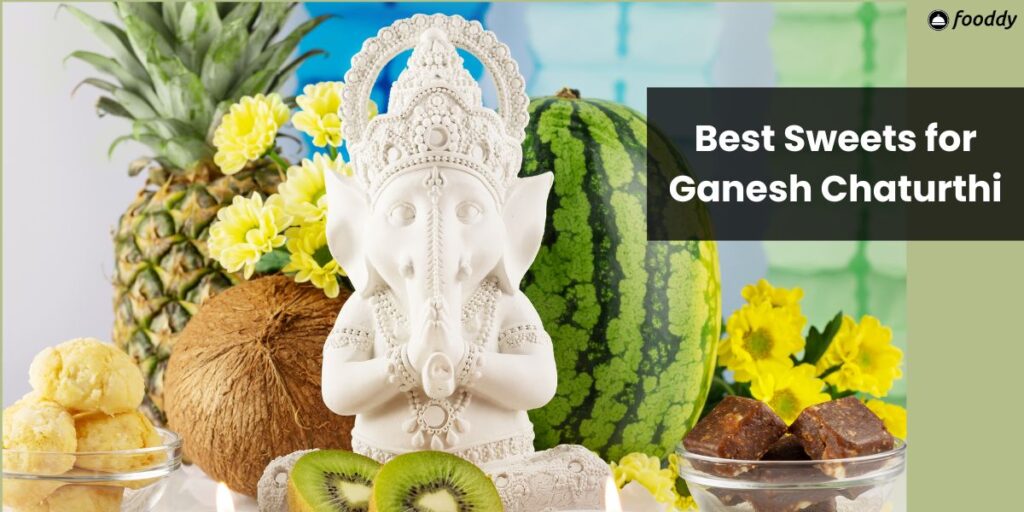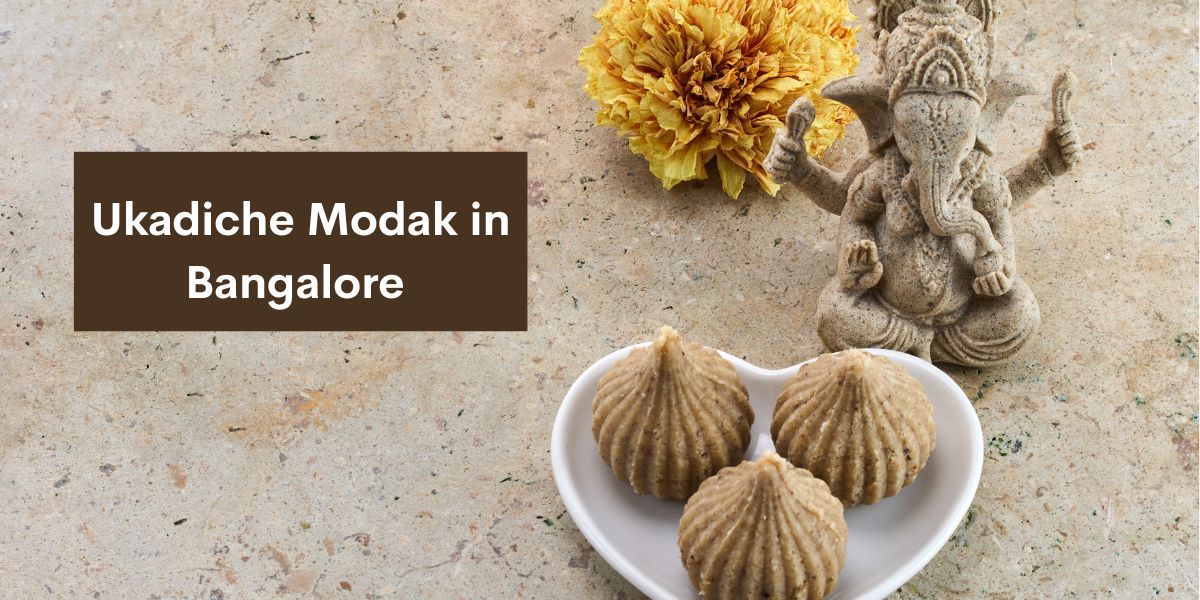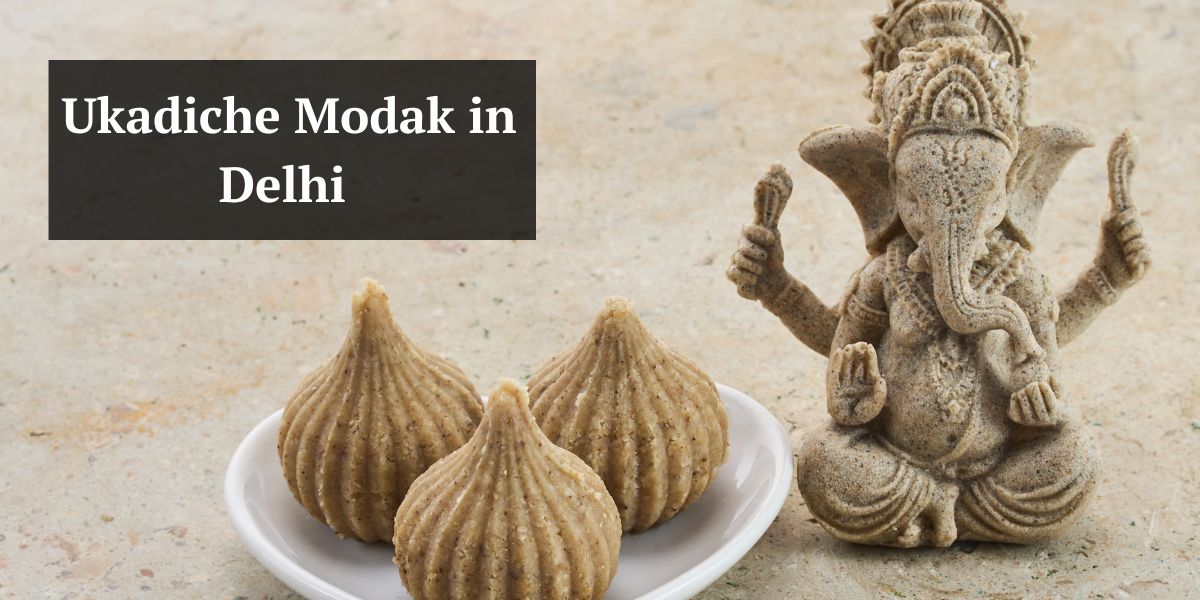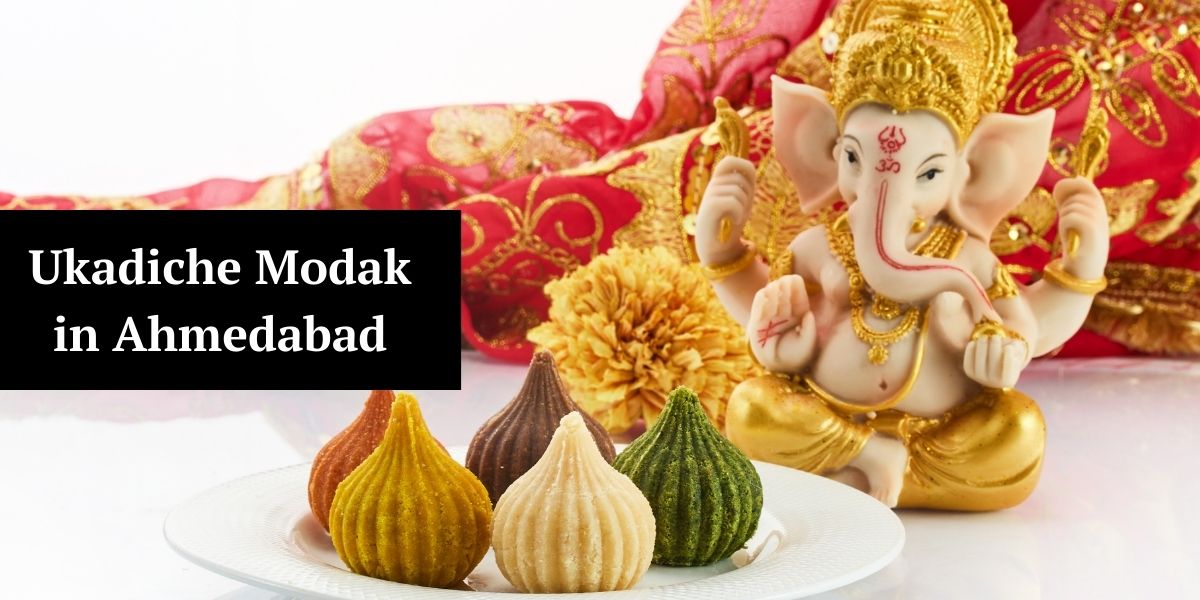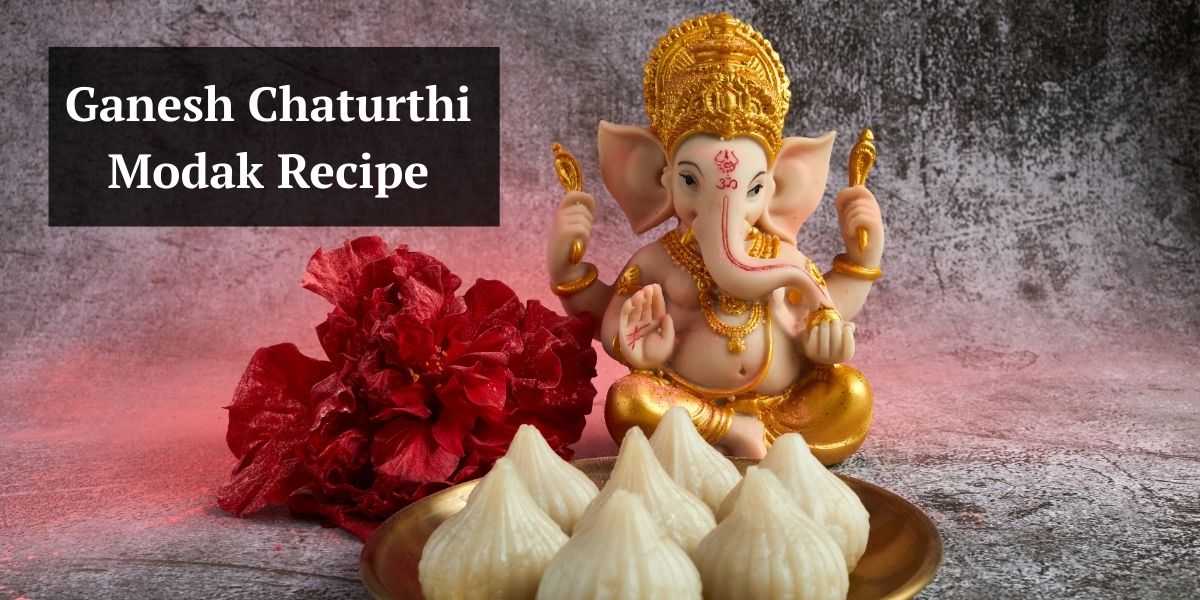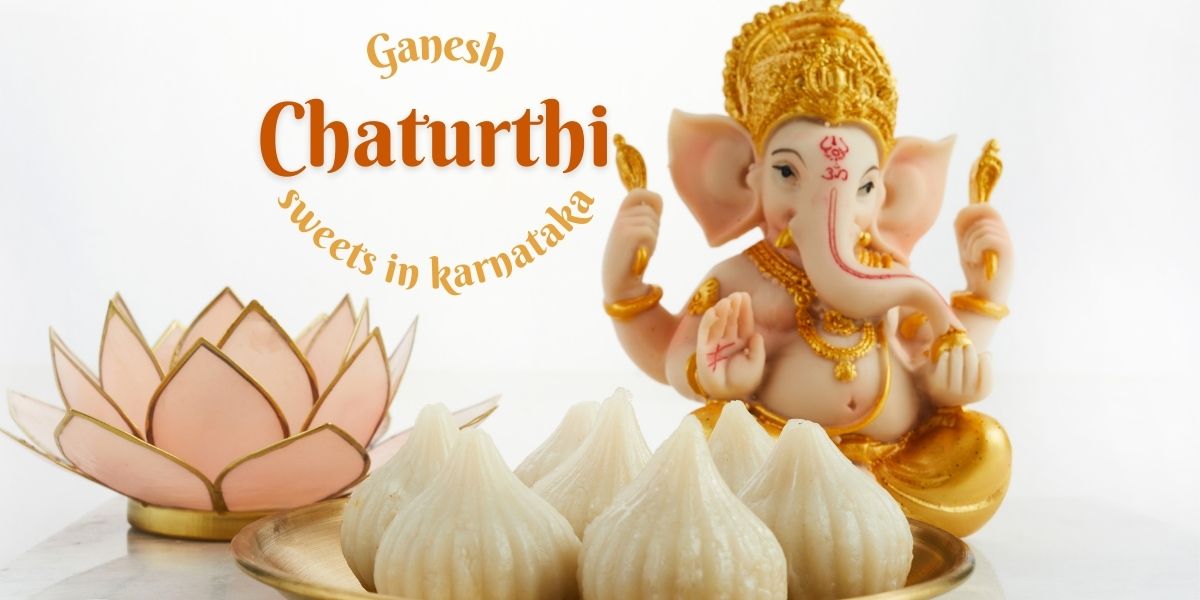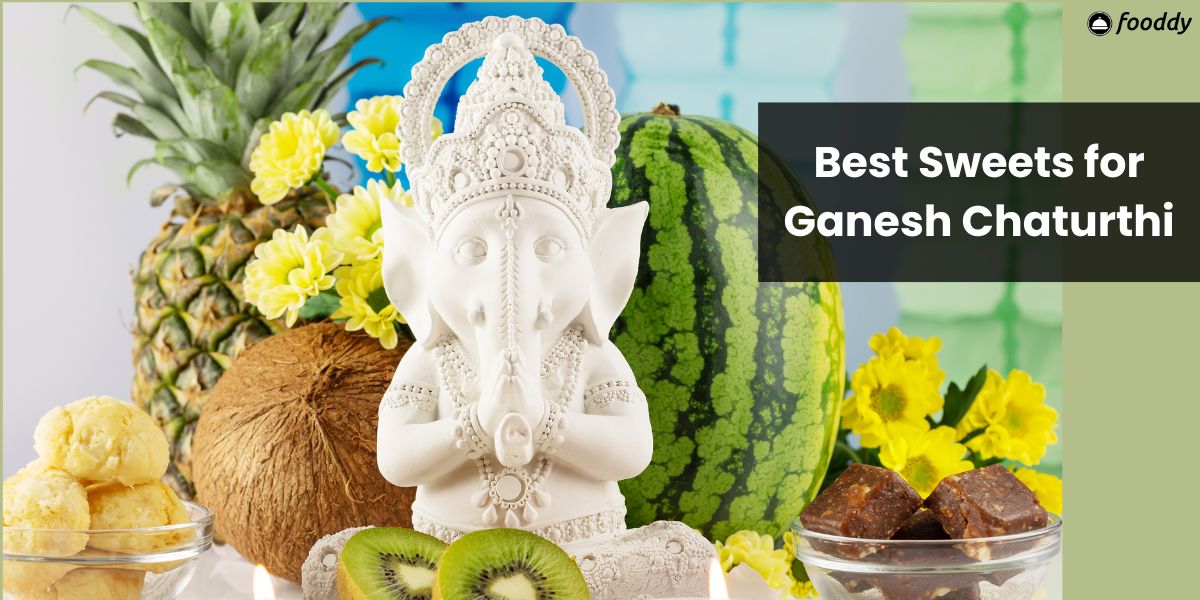Ganesh Chaturthi is much more than just a celebration; it is a deeply ingrained tradition that brings together happiness, society at large, and devotion. India celebrates this festival, which commemorates the birth of Lord Ganesha, the god of knowledge and prosperity, with great passion, particularly in Maharashtra, Karnataka, Goa, and areas of South India. Streets and homes are turned into hubs of enthusiasm, happiness, and commitment during this period—complete with decorations, prayers, and the best sweets for Ganesh Chaturthi that add a delicious touch to the festivities.
The custom of offering food, especially sweets, to Lord Ganesha lies at the heart of Ganesh Chaturthi. When fed his favourite foods, Lord Ganesha is said to bless his devotees, who are affectionately referred to as Modakapriyas—one who enjoys modaks. Old recipes have been passed down through the years, with each family adding their own special twist to classic confections.
The symbolism these candies hold is what really sets them apart. These are spiritual sacrifices presented with appreciation and reverence, not merely treats. Modak is still the traditional Ganesh Chaturthi dessert, but a variety of other treats have now gained popularity as part of the festival menu. This blog discusses the greatest desserts to make or serve during Ganesh Chaturthi, ranging from traditional dishes to contemporary favourites, including vegetarian and kid-friendly selections.
This guide will assist you in selecting the most popular candies to enhance your celebration, whether you’re hosting friends and neighbours, enjoying the event in a traditional home, or just wanting to savour the festive flavours.
List of Best Sweets for Ganesh Chaturthi
Every area has its own distinct take on the wide range of confections made during Ganesh Chaturthi. Even though there are differences in the sorts, the fundamental idea is always the same: affection, concern, and devotion go into making every sweet.
Some of the best and most well-liked treats during Ganesh Chaturthi are as follows:
1. Ukadiche Modak
This rice flour-based steamed dumpling, which is filled with a sweet coconut-jaggery filling, is regarded as the festival’s most significant dessert. “Ukadiche” alludes to the steaming procedure. These modaks are frequently presented to the deity in groups of eleven or twenty-one and have a delicate texture.
2. Fried Modak
These are baked using wheat or all-purpose flour and filled with the same coconut-jaggery mixture as the steaming version, but they are crunchier. For prasad, fried modaks are frequently prepared in bigger quantities and have a longer shelf life.
3. Obbattu / Holige / Puran Poli
In Maharashtra and Karnataka, a sweet flatbread studded with coconut, lentils, and jaggery is a usual dish. This classic celebratory dish, called Holige in Karnataka and Puran Poli in Maharashtra, blends warmth, sweetness, and texture.
4. Rava Ladoo
Utilising only a few ingredients, these laddoos are basic to make and made using semolina (rava), ghee, sugar, and cardamom. In addition to being a simple dessert to add to the celebratory tray, kids truly enjoy them.
5. Coconut Burfi (Kobbari Mithai)
Coconut burfi is a straightforward but luscious delicacy made by blending sugar or jaggery with shredded coconut. Due to its chewy, soft texture, which enhances its beauty, it is frequently cut into diamonds or rectangles.
6. Mysore Pak
A dense, ghee-rich dessert made with sugar and gram flour, Mysore Pak has its origins in the royal kitchens of Karnataka. Any festive cuisine would be enhanced by its mouthwatering texture.
7. Dry Fruit Ladoo
Rich in cashews, dates, figs, and almonds, dry fruit laddoos are a festive and healthy treat. They frequently simply use the inherent sweetness of dates and figs, with no additional sugar.
8. Chocolate Modak
A modern twist that appeals to both kids and adults is chocolate modaks. They are made by shaping melted chocolate or cocoa with condensed milk. They have gained popularity in metropolitan events despite not being traditional.
9. Kesar Pedha
Kesar Pedha is a traditional holiday treat that has a rich flavour and aroma thanks to thickened milk, saffron threads, and a touch of cardamom. A culinary delicacy and a symbol of devotion, these golden treats are frequently offered to Lord Ganesha as naivedya. They enhance the festivities of Ganesh Chaturthi with their soft, mouthwatering texture and exquisite nut garnish.
10. Panchakajjaya (Konkani Sweet Offering)
Made with jaggery, roasted gram dal, coconut, and sesame seeds, Panchakajjaya is a popular dish in coastal Karnataka and Goa. It is a dry mixture that is frequently given out as a holy sacrifice following the puja.
Whether they are traditional or modified, these treats are ceremonial manifestations of celebration, dedication, and thankfulness that go beyond simple consumption. Tradition, family tastes, and preparation time all play a role in selecting the ideal candies. However, you can get closer to the spirit of the event by including even one or two of these candies in your Ganesh Chaturthi celebration.
Related – Best Modak in Mumbai
Best Sweets for Ganesh Chaturthi – Vegetarian
Traditionally, Ganesh Chaturthi is observed as a satvik (pure vegetarian) holiday, in which no food is prepared using eggs, garlic, or onions. Sweets are especially sacred, always vegetarian, and founded on the principles of cleanliness and harmony found in Ayurveda.
A closer look at some of the top vegetarian desserts you may make for Ganesh Chaturthi is provided here:
1. Modak (Steamed and Fried)
The two types of modak are inherently vegetarian. The filling often consists of cardamom, jaggery, and coconut—healthy, basic ingredients that follow Satvik principles—while the outer shell is constructed from rice or wheat flour.
2. Tilgul Ladoo (Sesame Ladoo)
Made with jaggery and toasted sesame seeds, these ladoos are not only wholesome but also have a profound spiritual meaning. Since til (sesame) is regarded as auspicious and cleansing, it is a significant sacrifice.
3. Besan Ladoo
Made from roasted gram flour (besan), sugar, and ghee, besan ladoo is a popular holiday dessert that is formed into golden, circular sweets. These fragrant and flavorful ladoos, which represent warmth, custom, and celebration, are a must-have during Ganesh Chaturthi.
4. Kesar Peda
These vegetarian, rich, and fragrant dishes are created with cardamom, sugar, saffron, and milk solids (khoya). Those looking for milk-based items that are both festive and simple to produce will love these.
5. Aval Kesari (Poha Halwa)
Aval Kesari is a traditional South Indian treat made of flattened rice (poha), sugar, and ghee. It is often colored with saffron or food coloring to give it its unique hue. It has religious significance during Ganesh pujas and is easy to make and aromatic, especially in Tamil Nadu and Karnataka, where it is served as a sacred naivedya.
6. Dry Fruit Barfi
Dates, cashews, almonds, and a touch of rose water are all combined in this confection. It is ideal for health-conscious devotees who still want to indulge because it is vegetarian and sugar-free (if dates are used).
7. Sweet Pongal (Sakkarai Pongal)
This rice and jaggery-based sweet dish is typically prepared for Ganesh Chaturthi in Tamil Nadu homes, while it is more frequently seen during other South Indian festivities. Cardamom-flavoured and garnished with ghee-fried cashews, it’s a satisfying and delectable dish.
As traditional naivedya is supposed to be, none of these sweets contains artificial additions, processed components, or preservatives. These vegetarian selections capture the richness and simplicity of Indian festival cuisine while also respecting the celebration’s purity.
Best Sweets for Ganesh Chaturthi – Hebbars Kitchen
For Indian home cooks, Hebbars Kitchen has become one of the most reliable online recipe resources, particularly for festive fare. They have made the traditional cooking approachable for both novice cooks and younger generations by emphasising detailed visual recipes.
Hebbars Kitchen offers a carefully chosen assortment of traditional and contemporary Ganesh Chaturthi desserts. These are a few of their most popular and well-received recipes for the event:
1. Ukadiche Modak
This recipe, which is among the most well-liked instructions on their platform, simplifies the classic steamed modak into doable steps. Hebbars Kitchen focuses on the texture of rice flour dough, how to shape it by hand and with a mould, and how to keep it from sticking when steaming.
2. Chocolate Modak
Condensed milk and cocoa powder are used in their kid-friendly chocolate modak recipe, which is readily formed with moulds. It is a hybrid confection that appeals to contemporary palates while preserving the modak form.
3. Rava Ladoo
Their recipe for rava ladoo is ideal for last-minute cooking because it calls for few ingredients. Each step of the recipe is well illustrated, making it suitable for beginners.
4. Coconut Barfi
They utilise ghee, sugar, and fresh coconut in their rendition of coconut barfi. It’s a quick dish that may be prepared in modest quantities. You can also modify it by substituting jaggery for the sugar.
5. Peda and Barfi Variants
They provide a range of peda recipes made with flavoured syrups, milk powder, and mawa. These candies are appropriate for formal prasad distributions and have a rich texture.
Why Hebbars Kitchen Stands Out:
- Recipes are made simpler without sacrificing their authenticity.
- Indian homes frequently contain ingredients.
- The guesswork is eliminated with video demos.
- Cooking becomes a fun and engaging activity when it is presented clearly, and instructions are brief.
The recipes from Hebbars Kitchen give you the assurance and clarity you need if this is your first time making sweets for Ganesh Chaturthi or if you wish to include younger family members in the process.
Ganesh Chaturthi Food Menu
Food serves as both an offering and a celebration during the Ganesh Chaturthi holiday. A full festive menu usually includes savoury dishes, snacks, and drinks, even though sweets are the main attraction. While there are regional variations, the naivedya thali—what is offered to the deity prior to consumption—always takes a satvik approach.
A Traditional Ganesh Chaturthi Food Menu’s Elements:
1. Naivedya Sweets (as previously discussed)
This covers rava ladoo, coconut barfi, steaming modak, and other dishes.
2. Savoury Snacks
- Kara Kadubu – A flavourful modak that is packed with spicy coconut chutney or lentils.
- Masala Vada or Maddur Vada – A popular lunchtime snack during festivals, this crispy South Indian snack is composed of chana dal and spices.
- Ambode (Karnataka-style vada) – Lentils that have been soaked and crushed into a crispy fried snack.
3. Main Dishes
- Dal and Ghee over Steamed Rice
- Vegetable Rasam or Sambar
- Curry made with buttermilk, Majjige Huli
- Palya (seasonal veggies stir-fried with vegetables)
4. Accompaniments
- Kosambari, a cucumber-legumes salad
- Pickles and papad
- The yoghurt-based side dish known as tambuli
5. Payasa (Kheer)
- Gasagase Payasa – Made with coconut, jaggery, and poppy seeds.
- Shavige Payasa – Cardamom, nuts, and ghee are boiled with vermicelli in milk.
In addition to being delicious, this combination is made to be quickly digested, taste balanced, and spiritually consistent with the notion of feeding the divine. Families can celebrate, bless, and strengthen their bonds over the thali that is served following the offering.
Ganesh Chaturthi Food Menu – Vegetarian
Ganesh Chaturthi dinners are usually completely vegetarian in most traditional homes. It’s not only vegetarian, but also satvik, which means it doesn’t include garlic, onions, or anything else that’s deemed tamasic or too stimulating. During holy rites and spiritual celebrations like Ganesh Chaturthi, the satvik diet is thought to foster serenity, devotion, and purity—qualities that are desired.
A typical vegetarian menu in many South Indian and Maharashtrian houses looks like this:
Morning Naivedya Offering (Puja Plate)
- Ukadiche Modak – The main naivedya is steamed sweet dumplings served in odd numbers (11 or 21).
- Rava Ladoo – Rich in ghee and cardamom, is easy to make.
- Fruits – Apple slices, pomegranates, or bananas.
- A delicate coconut or chunks of coconut – A symbol of purity and freshness.
- Tulsi or Betel Leaves with Betel Nut – Considered revered.
- Ghee, Milk, Curd, and Honey – Typically constitute part of the panchamrit, or five sacred gifts.
Main Vegetarian Festive Meal (Lunch Thali)
- Steamed Rice with Ghee – The centrepiece of the majority of South Indian thalis.
- Tempered Moong Daal or Toor Daal– Nutritious and subtly flavoured.
- Majjige Huli (Buttermilk Curry) – A yoghurt dish made with coconut and vegetables like cucumber or ash gourd.
- Sambar or Rasam – Depending on the geographical region, one or both are provided.
- Kosambari – A raw salad consisting of moong dal, cucumber, coconut, and lemon.
- Vegetable Palya – A dry sabzi prepared with beans, cabbage, or carrots.
- Papad or Happala – For crunch and completeness.
- Pickle and Salt – A minor but crucial flavour addition.
- Payasa (Kheer) – A sweet accent is added to the meal with Shavige (vermicelli) or Gasagase (poppy seed) payasa.
Evening Prasada or Snack Offering
- Kara Kadubu – One type of savoury steamed dumpling.
- Sweet Avalakki (Poha) – Rice that has been flattened and topped with grated coconut and jaggery.
- South Indian Stir-Fried lentils, or sundal – Made using moong or chickpeas and seasoned with curry leaves and mustard.
Every meal is prepared using ghee or cold-pressed oils and spices such as curry leaves, cumin, mustard, hing (asafoetida), and green chillies (in moderation). Seasonal foods, purity, and cooking with a serene, contemplative method continue to be the key points of emphasis.
In addition to being healthy, this type of meal has great symbolic meaning; it stands for health, abundance, and giving the best of ourselves to the Almighty.
Conclusion for Best Sweets for Ganesh Chaturthi
During the Ganesh Chaturthi holiday, spirituality and culinary customs coexist. In addition to providing for our own needs, cooking is an act of devotion that should be shared with family, the community, and most importantly, Lord Ganesha.
The treats on this occasion are very spiritual and culturally significant. From inventive chocolate variants to the classic steaming modak, from creamy pedas to dry fruit ladoos, each delicacy spreads love and happiness. They are customs that have been passed down through the centuries, preserving blessings, memories, and festive joy. They are more than just recipes.
Even younger generations are discovering ways to rediscover traditional cuisine through websites like Hebbars Kitchen, which breathes vintage charm into contemporary kitchens. The purpose is more important than whether you prepare an entire thali or just offer a single modak with sincere prayer.
May the scent of ghee and jaggery, the sound of chanting and laughter, and the warmth of sharing sweets that unite people flood your home as you get ready for this year’s Ganesh Chaturthi.
FAQs for Best Sweets for Ganesh Chaturthi
Q1. For Ganesh Chaturthi, what is the most significant dessert? Ans:- Made with rice flour, coconut, and jaggery, Ukadiche Modak is the most traditional and esteemed sweet offering to Lord Ganesha.
Q2. Do Ganesh Chaturthi sweets all contain vegetarian ingredients? Ans:-Indeed. The majority of the desserts made for Ganesh Chaturthi are satvik vegetarian, which means they don’t include any meat, eggs, garlic, or onions.
Q3. Is it possible to prepare Ganesh Chaturthi sweets a day ahead of time? Ans:- It’s true that several desserts, including rava ladoo, besan ladoo, coconut barfi, and dry fruit modaks, can be made a day or two in advance and properly chilled.
Q4. Do 21 modaks have to be provided? Ans:- In many houses, it is customary to offer 21 modaks, however, the quantity can vary. Above all, the offering’s sincerity is crucial.
Q5. Which Hebbars Kitchen treats are appropriate for novices? Ans:- The recipes for coconut burfi, chocolate modak, and rava ladoo from Hebbars Kitchen are easy to make and ideal for novices.
Q6. Do I need a mould to manufacture modak? Ans:- Indeed. It is possible to mould modaks by hand. They are just as genuine and significant, but it requires some work.
Q7. What are some ways to make the modak filling more varied? Ans:- You can add dry fruits, poppy seeds, sesame seeds, or even gulkand for a different taste twist in addition to coconut and jaggery.

